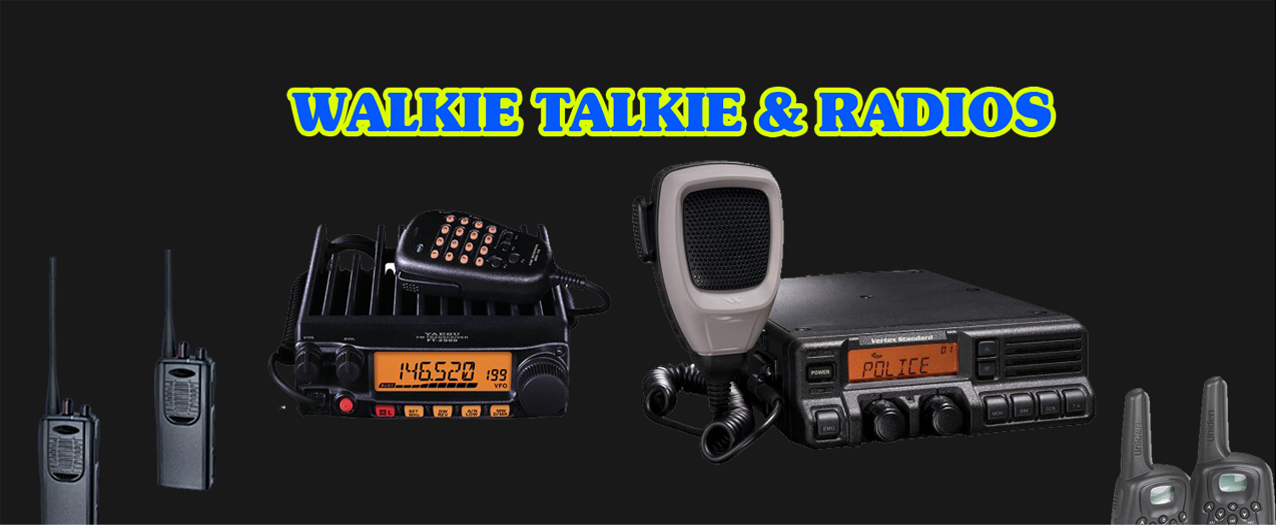Two way radio headsets really great accessory because they don't jam your hand & can help you keep your hands free while communicating.
Friday, April 13, 2012
Carrier Frequency bands
- The carrier waves frequencies for radio broadcasting are assigned by Federal Communications Commission (FCC)
- AM carrier frequency - 535 kHz to 1605 kHz
- FM carrier frequency - 87.5 MHz to 108 MHz
How a two way radio system works
Basically, a radio communication system consists of a transmitter, a channel, and a receiver.
A B
- In a transmitter,
- In a receiver,
- Simplex – A can talk to B
Radio, T.V. broadcasting, CD/DVD ROM Simplest type, requires one transmitter and one receiver Types of Communication
- Duplex – A and B both can talk to each other simultaneously
Telephone, Telegraph, Complex, requires two transmitter and two receiver at both ends Needs two different channels for simultaneous transmission
History of two way Radio
The first portable 2-way voice radio developed by Hings in 1937, the "Light Aircraft Emergency Set" was only 12 pounds, battery included, range approx. 130 Miles, painted yellow and water tight when the cover over the dials was locked on with two quick release latches on either side. Made buoyant for people near water in case the plane had to drop the radio into the water while still flying. Fold down antenna included in case. Capable of 2 frequencies, one for the company “Cominco” and the other for the “Canadian Army Signal Corps”. Could be carried while transmitting and receiving voice.
December 7, 1938; The 10PC20 Airplane Radio developed for Cominco pilots.Using the same technology for the Light Aircraft Emergency Set, made voice communication in small aircraft feasible of long transmission distances. This set was also capable of transmitting code and voice, as were most of the units Hings developed.
In Sep. 2003 US manufacturers released the first application allowing a GSM to act like a walky-talky. In Nov. 2003 Nokia, provided the first push-to-talk (PTT) GSM, the Nokia 5140, displayed at left. According to a poll made on Aug. 2003 in the U.S.A by Zelos Group 45 % of them declared wishing that their next GSM is equipped with the PTT functionality. The Push-to-talk comes thus in second position behind the picturing functionality.
Thursday, April 12, 2012
How walkie talkie Begins
Donald Hings, pioneered one of the first Walkie-Talkies. In 1938 he was working for a mining company that deployed geologists to remote areas of western Canada to locate mineral deposits. Now, if there was a crash in the bush, pilots had no way of signalling their location. That year, he developed an effective, portable emergency voice radio. It could float, featured a folding antenna and its signal had a 130-mile range. The British Army was very impressed with these "radios" and as Mr. Hings continued his work to improve his invention, walkie talkies became invaluable war time tools. Canadian, Al Gross invented the walkie-talkie in 1938. Al Gross' device did not win FCC approval until 1958.
The first radio receiver/transmitter to be nicknamed "Walkie-Talkie" was thebackpacked Motorola SCR-300, created by an engineering team in 1940 at the Galvin Manufacturing Company (forerunner of Motorola). The team consisted of Dan Noble, who conceived of the design using FM technology, Henryk Magnuski who was the principal RF engineer, Bill Vogel, Lloyd Morris, and Marion Bond. Motorola produced the hand-held AM SCR-536 radio as well during the war. It was called the "Handie-Talkie" (HT).
Saturday, April 7, 2012
Radio Communication
Radio Communication means any transmission, emission or reception of signs, signals, writing,images, sounds or intelligence of any nature by means of electromagnetic waves of frequencies 0Hz - 3000GHz propagated in space without artificial guide.
From Wikipedia
Radio is the transmission of signals through free space by electromagnetic waves with frequencies significantly below visible light, in the radio frequency range, from about 3 kHz to 300 GHz. These waves are called radio waves. Electromagnetic radiation travels by means of oscillating electromagnetic fields that pass through the air and the vacuum of space.
Information, such as sound, is carried by systematically changing (modulating) some property of the radiated waves, such as their amplitude, frequency, phase, or pulse width. When radio waves strike an electrical conductor, the oscillating fields induce an alternating current in the conductor. The information in the waves can be extracted and transformed back into its original form.
Sunday, April 1, 2012
What Is Walkie Talkie
Walkie Talkie
A walkie-talkie is a hand-held portable, bi-directional radio transceiver. Major characteristics include a half-duplex channel (only one radio transmits at a time, though any number can listen) and a push-to-talk switch that starts transmission. Hand-held transceivers became valuable communication tools for police, emergency services, and industrial and commercial users, and are also popular with some amateur radio operators.
The personal walkie-talkie has now become popular again with the new U.S. Family Radio Service and similar unlicensed
services in other countries. While FRS walkie-talkies are also sometimes used as toys because mass-production makes
them low cost, they have proper super heterodyne receivers and are a useful communication tool for both business and
personal use.
The name walkie talkie was said to have been coined in 1941 during a demonstration in Toronto. A reporter saw a soldier walking about with the C-18 version strapped to his uniform. "What does it do?" the soldier was asked. "Well, you can talk with it while you walk with it," was the answer and the name Walkie Talkie was born.





